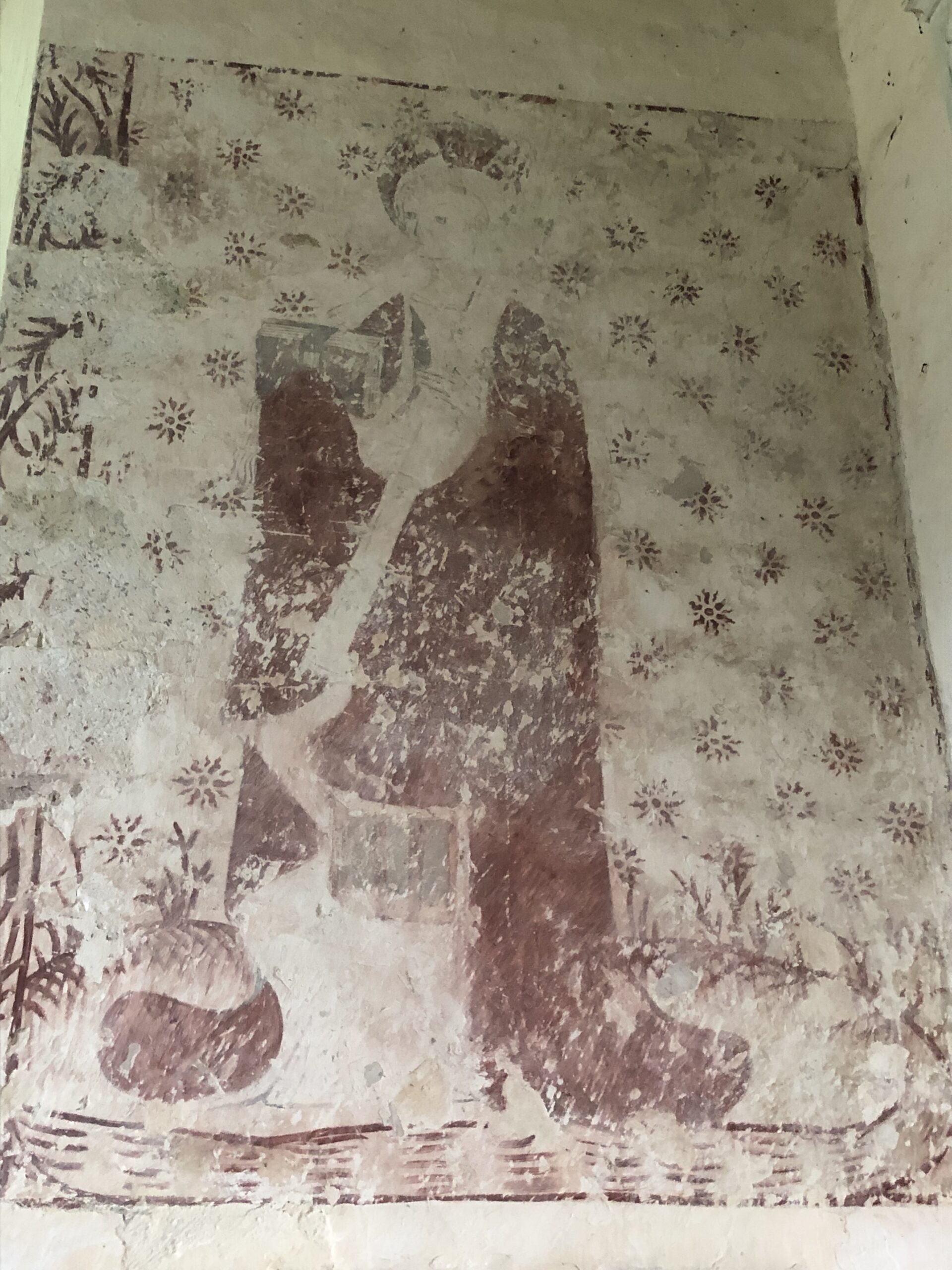It’s a still, bright Sunday morning. We walk from our B&B through the quiet streets of Hereford, calling at our favourite lunch provider, Greggs, and make for the Cathedral to visit an attraction we missed yesterday, the statue in the close of Edward Elgar leaning on his bicycle. As we walk towards to Wye Bridge the Cathedral bells start to peal, and we can still hear them from afar as we walk out along the north bank of the river.
This is one of the highlights of the trip. The bells, the unseasonal warmth, the still water with swans, the woods on the other bank and gently rising fields to our right, people taking their early Sunday exercises – rowing, jogging and cycling – all combine to produce a rare feeling of equilibrium and lack of strain. We pass Belmont Abbey, whose monastic disciplines produced some wonderful poems by Dafydd Pritchard a decade ago, but the building’s hidden by trees across the river. The odd angler, extravagantly equipped, scans the water. The only people missing are the Couple from Chepstow: have they started before us?
Breinton is the first place we reach. Here we leave the river and climb past the entrance to Breinton House, with its metal deer heads mounted on pillars, and through an orchard. After Upper Breinton we go up a lane, with good views forward and back, but then things go wrong. Big fields are always likely places to get lost, and this field, overlooked by a grand house, is big. Even with the help of OS app’s red pointer on our smartphone we miss a hidden and unmarked stile to our right, overwhelmed by foliage, and stumble about on the edge of the field until we realise where we should be. (Later we learn that the Couple from Chepstow had similar uncertainty and climbed the wrong stile, finding themselves lost in dense undergrowth.)
Next we’re in orchards again, and moving north to Sigwas Pool, a nondescript village ribonned along a busy main road. Finding no better place to rest we fling our sacks down at the side of a field and have our elevenses. Next, we reach a lane and walk along it to Kenchester and the site of the small Roman town of Magna Castra, traditionally called Magnis. The town’s boundaries, shaped like a hexagon, are hidden by high hedges, and it’s hard to get an appreciation of the place. As if to make up for the lack of visible remains of the town, the owner of one of the houses on our right has erected in the front garden a life-size model Roman soldier, complete with helmet, shield and spear. He looks far from scary.
A little further on we pass Lady Southampton’s Chapel, an elegant Methodist brick chapel of 1830, with a hipped roof and a pillared portico over the main door. Close by is the Rectory, a large classical building, also with a porch over its door. It seems to want to assert the superiority of the established church over those upstart nonconformists.
We’re now on the old Roman road that aims towards Clyro. The next village is Bishopstone. Here we have a rare conversation with someone born and bred in a place we pass through. He lives in Forge Cottage, an old ‘black and white’ Herefordshire house by the roadside. For over fifty years he was the local milkman, and still works some land behind the house. His daughter trained as a nurse in Swansea, and during Covid worked for two years in an ICU department in a Hereford hospital.
We wave goodbye and walk on with the Romans. The lane’s now quieter, except for cyclists. But across Hay Bluff in the distance we can see rain sweeping in from the east, and soon it’s upon us. We struggle, for the first time on this trip, to get into our rainwear before the rain becomes heavier. Before long we’re in Byford and take shelter in the church porch. There we can sit on benches and have our lunch. The church is open, and inside there are late medieval paintings on one of the walls.
After Byford the rain clears and we’re deep in Appleland, field after field of orchards, all belonging to Bulmer. The trees are rigidly regimented, in well-spaced rows, presumably so that the apples can be harvested automatically rather than picked by hand. There’s no one around, except a strange van from Norwich that passes us. Could those two sinister people in it, wonders M., possibly be East Anglian apple thieves?
The apple trees finally give out, and we’ve arrived at Monnington Church. There’s no road: walking is the only way to reach it;. On one of the walls is a baroque coat of arms of Charles II (the local family was fiercely royalist). Monnington is one of the places where Owain Glyndwr was said to have hidden himself after the failure of his rebellion. It’s still off the beaten track today, and he have a fair walk ahead of us to get to the main road and our home for the night, the Portway Inn.
Before we eat I walk up the road behind the hotel to visit St Mary’s Church opposite Oakchurch Farm in Staunton-on-Wye. From the churchyard there’s a good view of the Wye valley, broad at this point, and of the acres of apple trees we walked through earlier. I’ve never seen so many apples in my life.









Leave a Reply